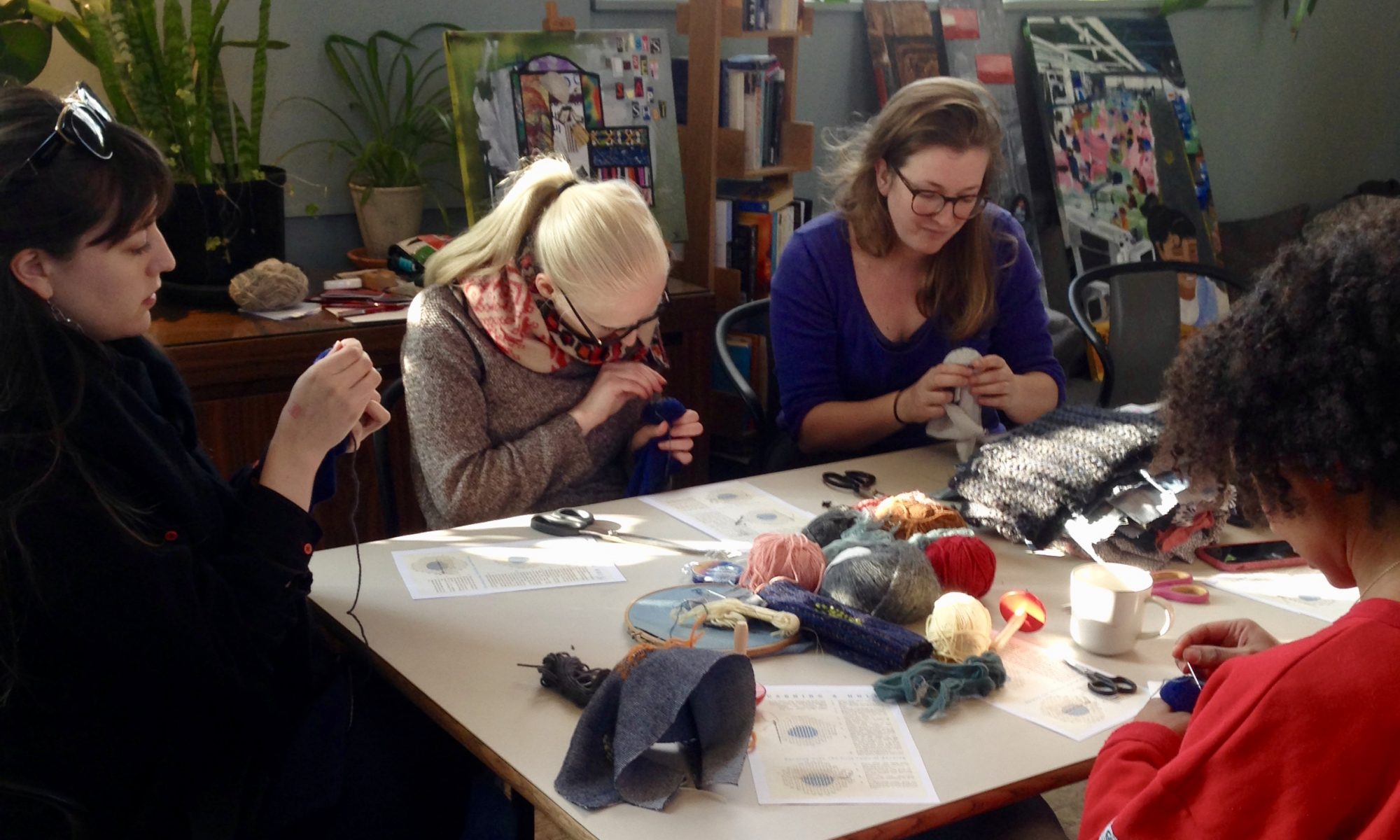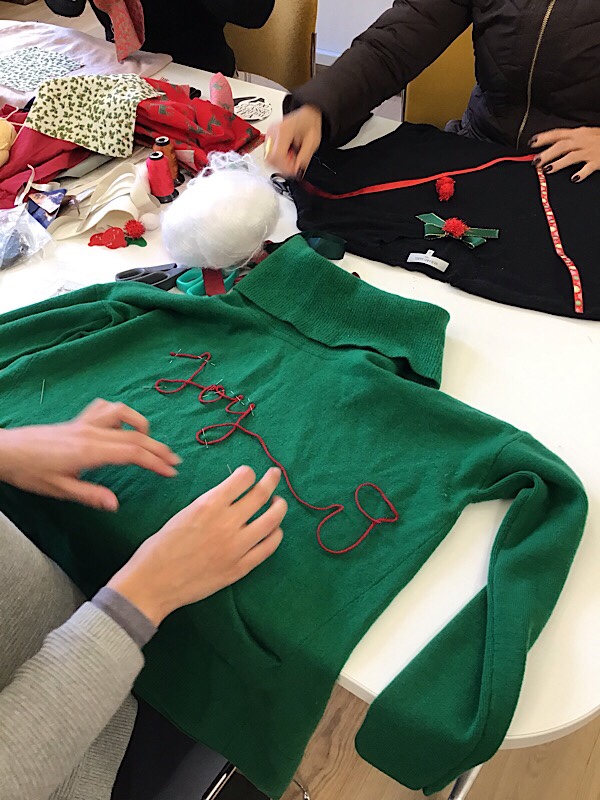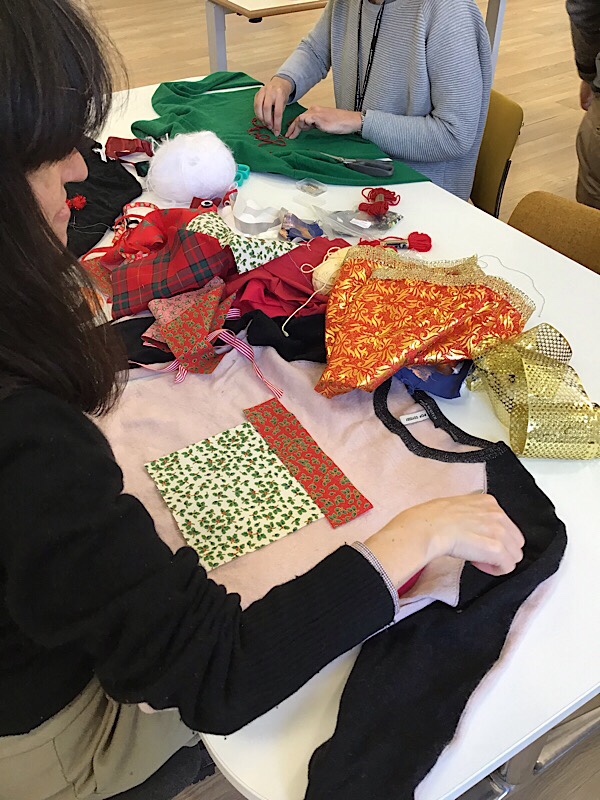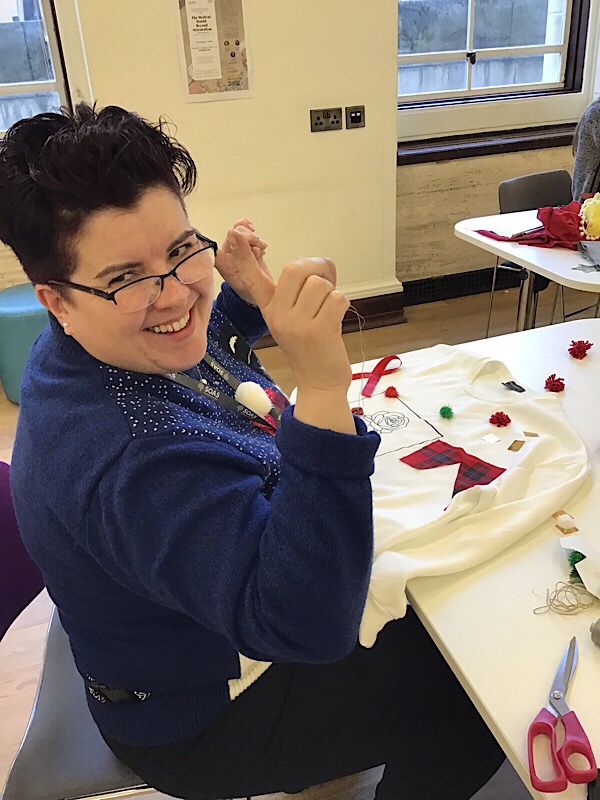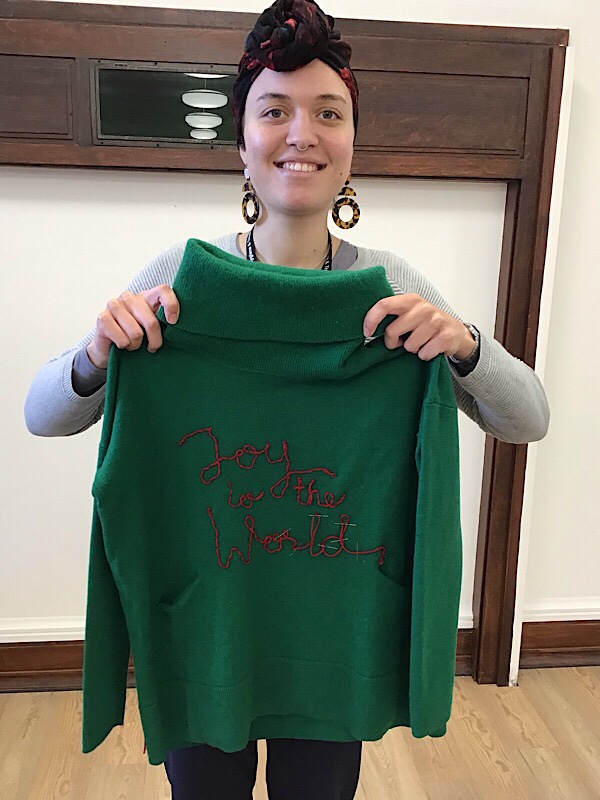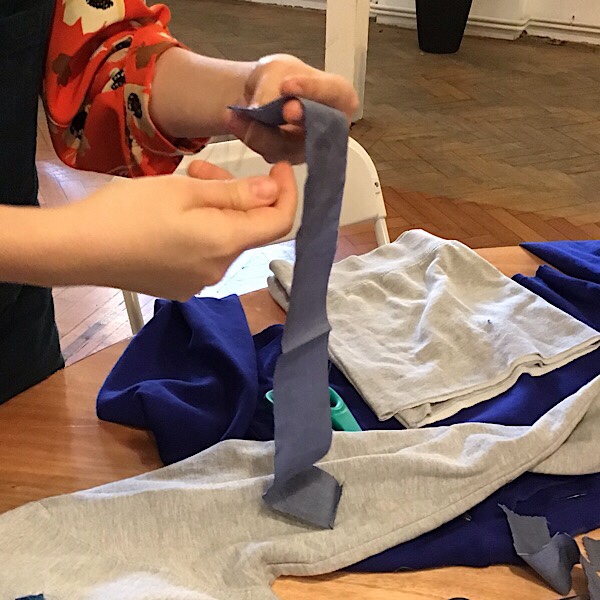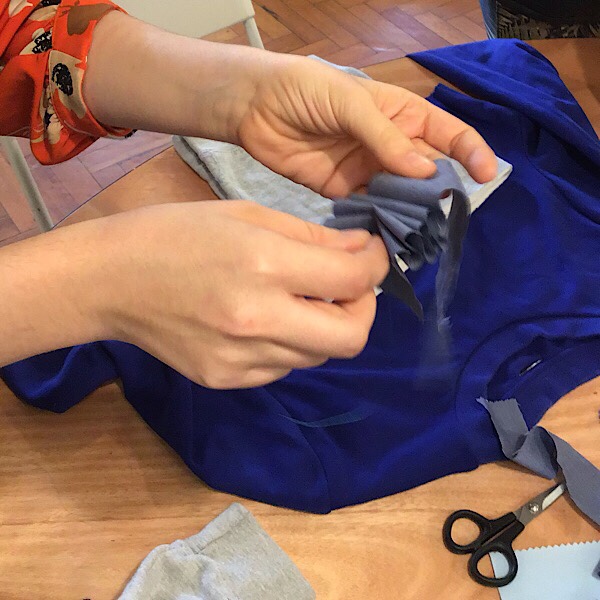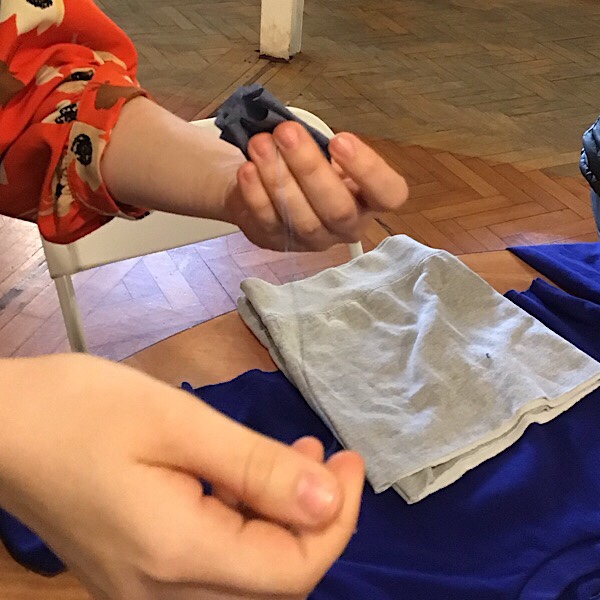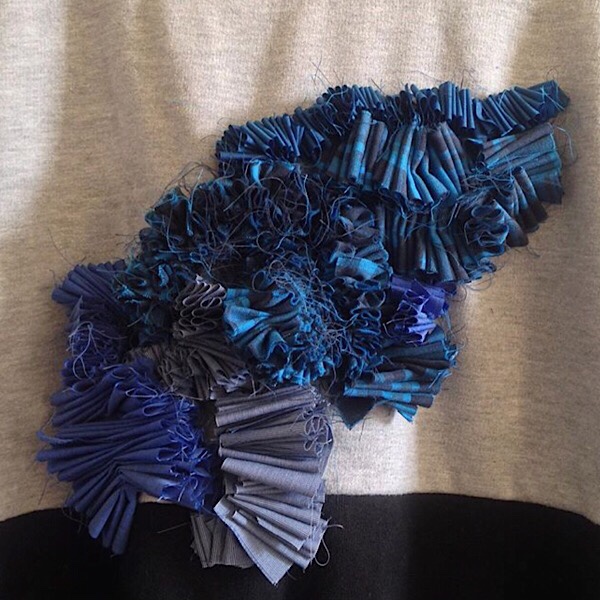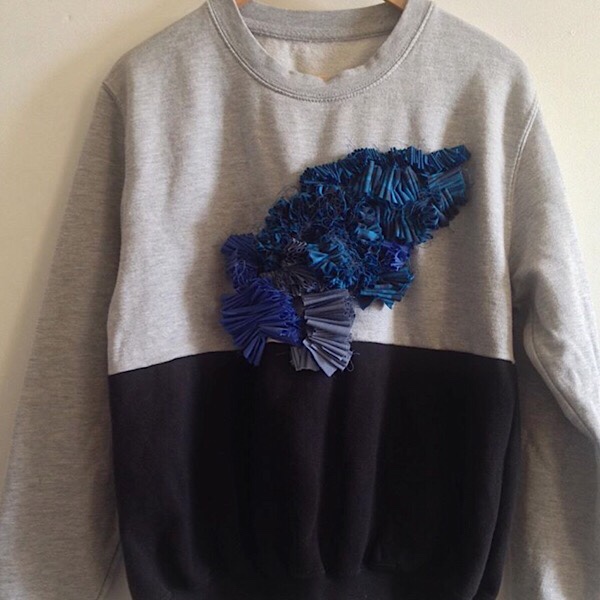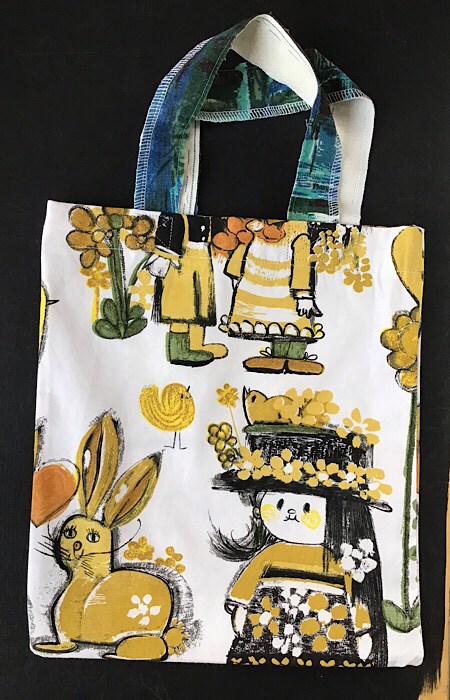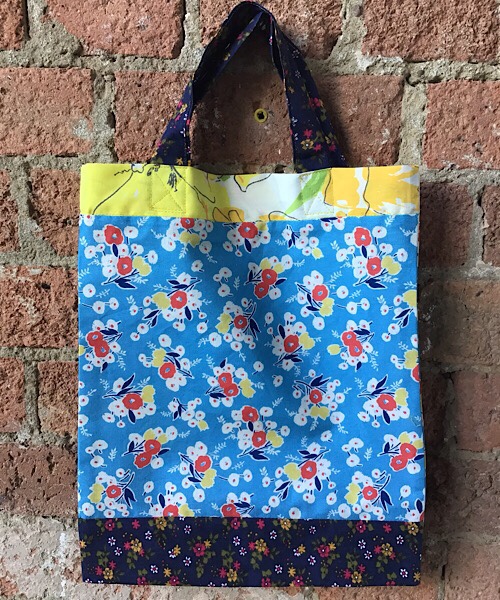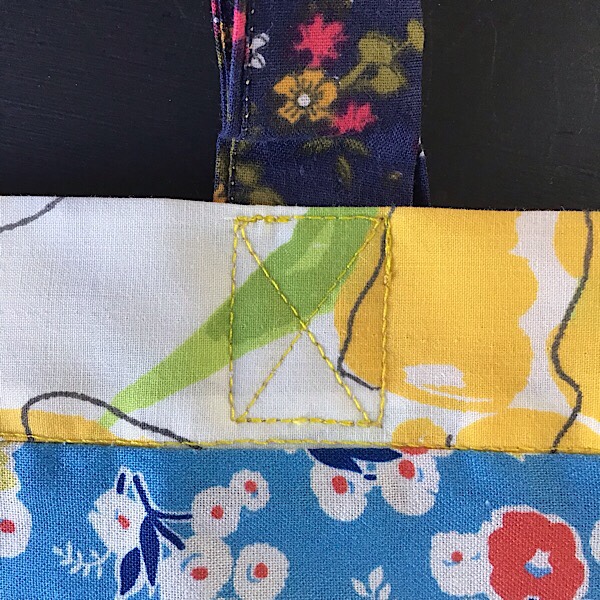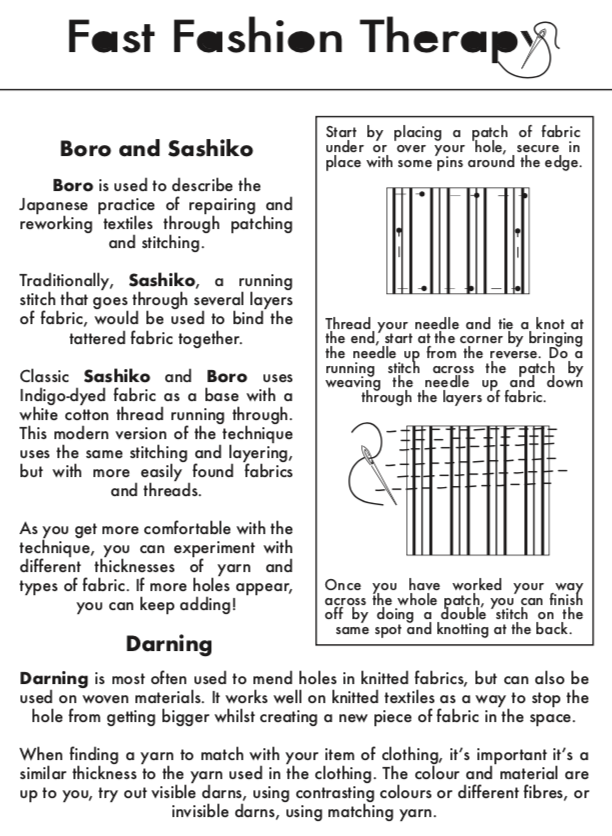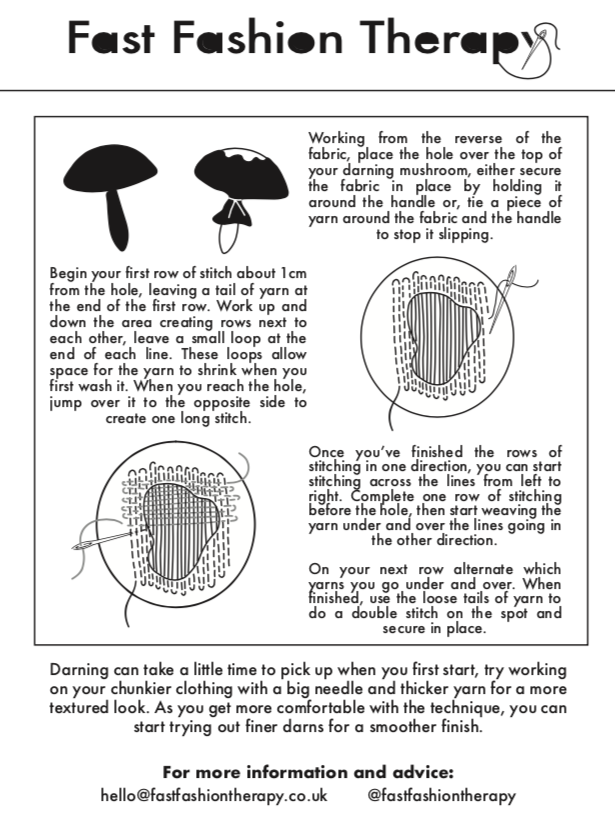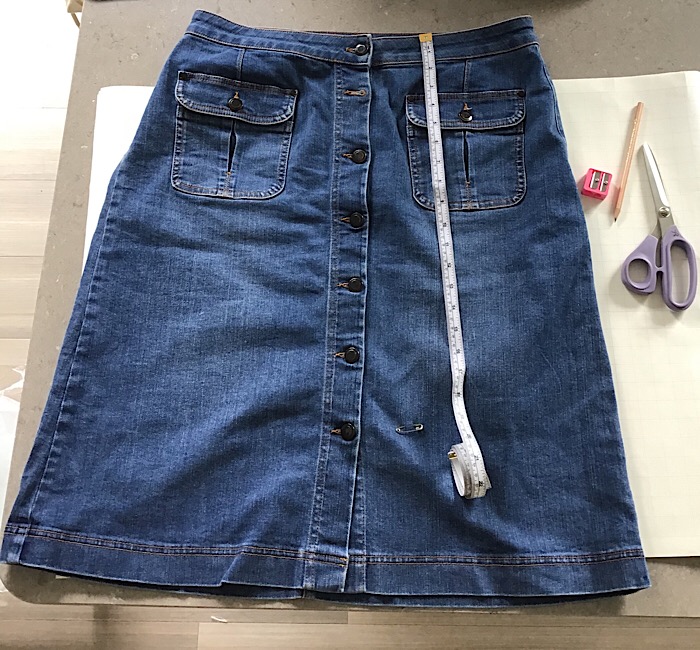It is estimated that 12 million Christmas jumpers will be bought this festive season despite 65 million lurking in the back of the wardrobe according to charity Hubbub. Speaking in The Daily Telegraph, the Charity’s project co-ordinator Sarah Divall suggests customers ‘swap, buy second-hand or re-wear and remember a jumper is for life not, just for Christmas.’
These facts inspired us to create two upcycling workshops to combat this example of fast fashion, textile and plastic waste (up to 75% of Christmas jumpers contain acrylic, a form of plastic)
Upcycle a Plain Jumper Into a Christmas Jumper
The London School of Hygiene and Tropical Medicine asked us to help their staff and students create festive jumpers from plain knitwear already in their wardrobes as part of their Sustainable Christmas Fair. We were really impressed with everyone’s creativity. Techniques such as couching, appliqué and embroidery were applied using festive trims and fabric remnants we picked up at Charity shops. There are plenty available this time of year.
Upcycle a Christmas Jumper to Wear All-Year
We launched our December workshops at Buy a Gift’s Zero Waste Christmas market. Alternatively we took a Christmas jumper, added embellishments to create a jumper we could wear all year round. Ruching scrap fabrics and appliqueing them over the Christmas motif. This effect can be used to cover any branding on sweatshirts and t-shirts.
We run a variety of fashion repair and upcycling workshops for up to 15 people. Please email us on hello@fastfashiontherapy.co.uk to book us for your sustainable fashion event or click on our event calendar for our upcoming workshops.
